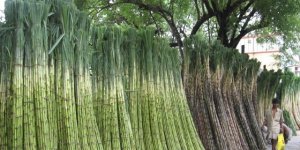| News / Science News |
Hidden Mayan Civilization Revealed in Guatemala Jungle
Researchers using a high-tech aerial mapping scanner have discovered the ruins of tens of thousands of ancient Mayan structures that have been hidden and preserved for centuries under northern Guatemala's thick jungle.
The 60,000 newly discovered structures include raised highways, urban centers with sidewalks, homes, terraces, industrial-sized agricultural fields, irrigation canals, ceremonial centers, a 30-meter high pyramid, fortresses and moats.
Stephen Houston, professor of archaeology and anthropology at Brown University, told the BBC that the revelation of the sprawling Central American civilization was "breathtaking." He said, "I know it sounds hyperbolic, but . . . it did bring tears to my eyes."
An alliance of U.S., European and Guatemalan archaeologists worked with Guatemala's Mayan Heritage and Nature Foundation on the project over the past two years.
The Mayan culture was at its peak about 1,500 years ago in what is present day southern Mexico, Guatemala and parts of Belize, El Salvador and Honduras.
Marcello Canuto, a Tulane University archaeologist and one of the project's top investigators, said the discoveries are a "revolution in Maya archeology."
The new information suggests that millions more people lived in what is now Guatemala's Petan region than previously thought.
Researchers say they now believe that instead of five million that as many as 10 to 15 million people lived in the region.
The researchers used a remote sensing method known as LiDAR (Light Detection and Ranging) to discover the hidden treasures of a civilization that National Geographic now compares to ancient Greece or China.
LiDAR bounced pulsed laser light off the ground, revealing contours hidden by dense foliage in the 2,100-square-kilometer mapped area.
"Now it is no longer necessary to cut through the jungle to see what's under it," said Canuto.
"We've had this western conceit that complex civilizations can't flourish in the tropics, that the tropics are where civilizations go to die," Canuto told National Geographic. "But,with the new LiDAR-based evidence from Central America and [Cambodia's] Angkor Wat, we now have to consider that complex societies may have formed in the tropics and made their way outward from there." (VOA)
YOU MAY ALSO LIKE





